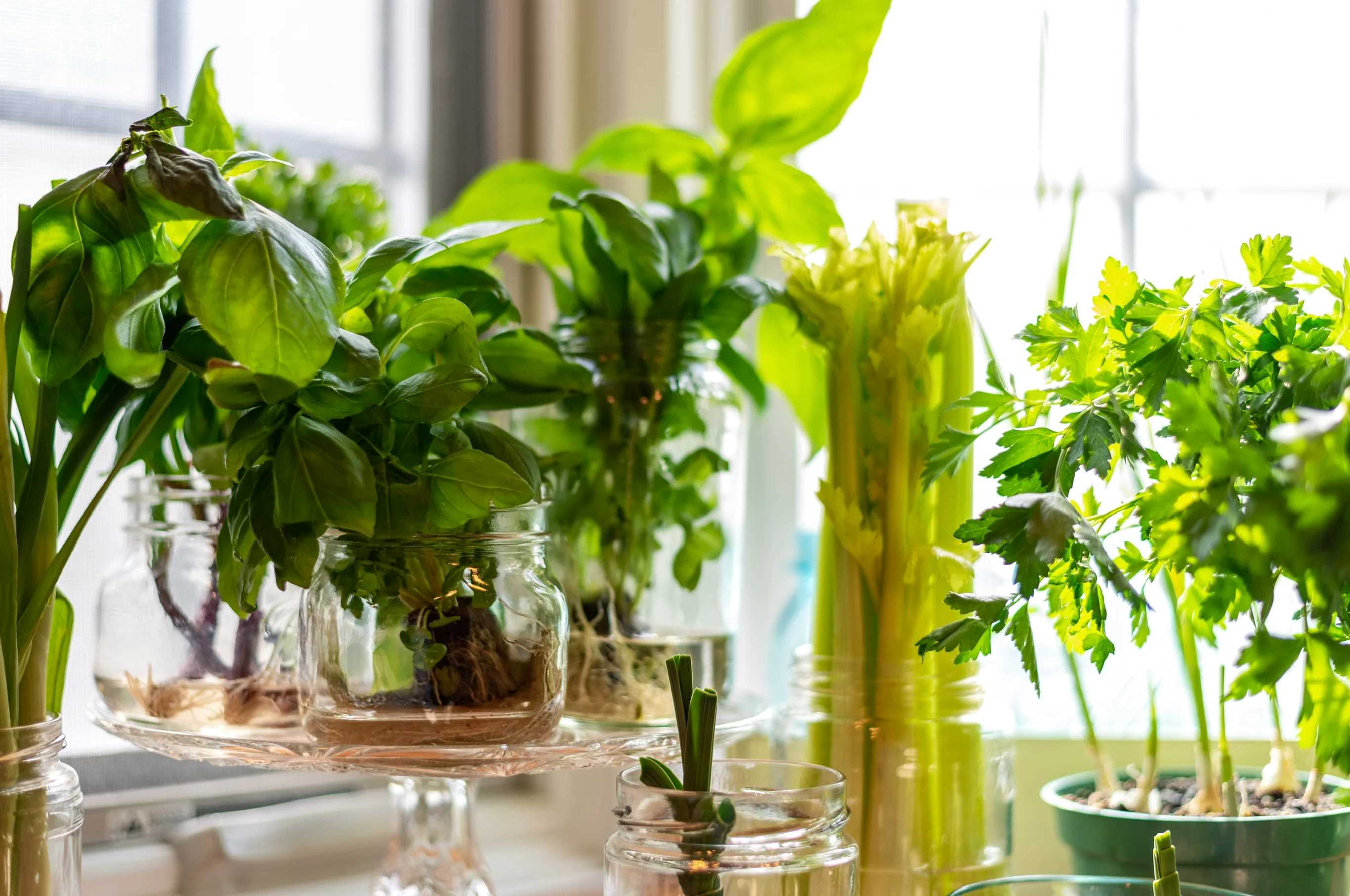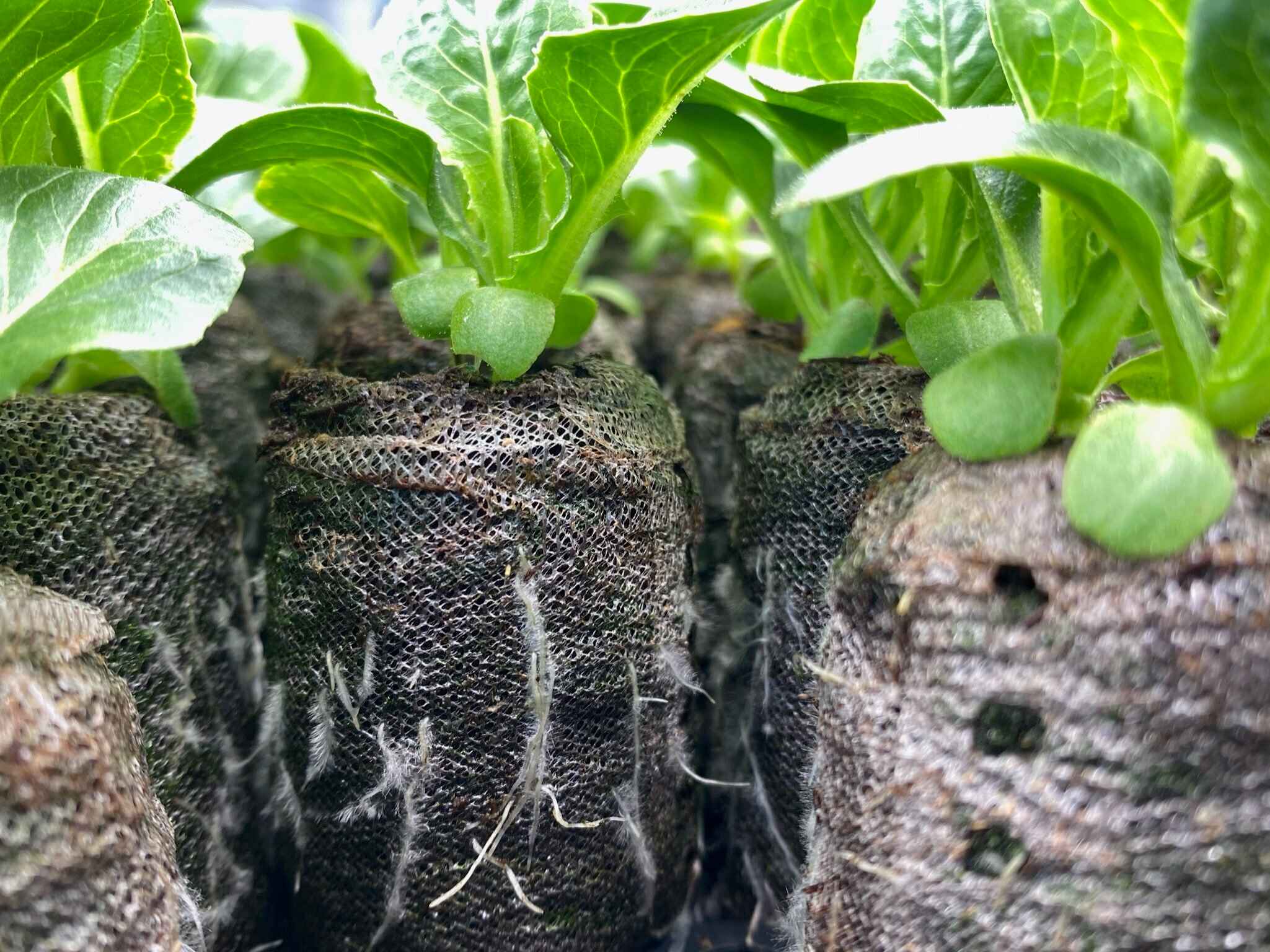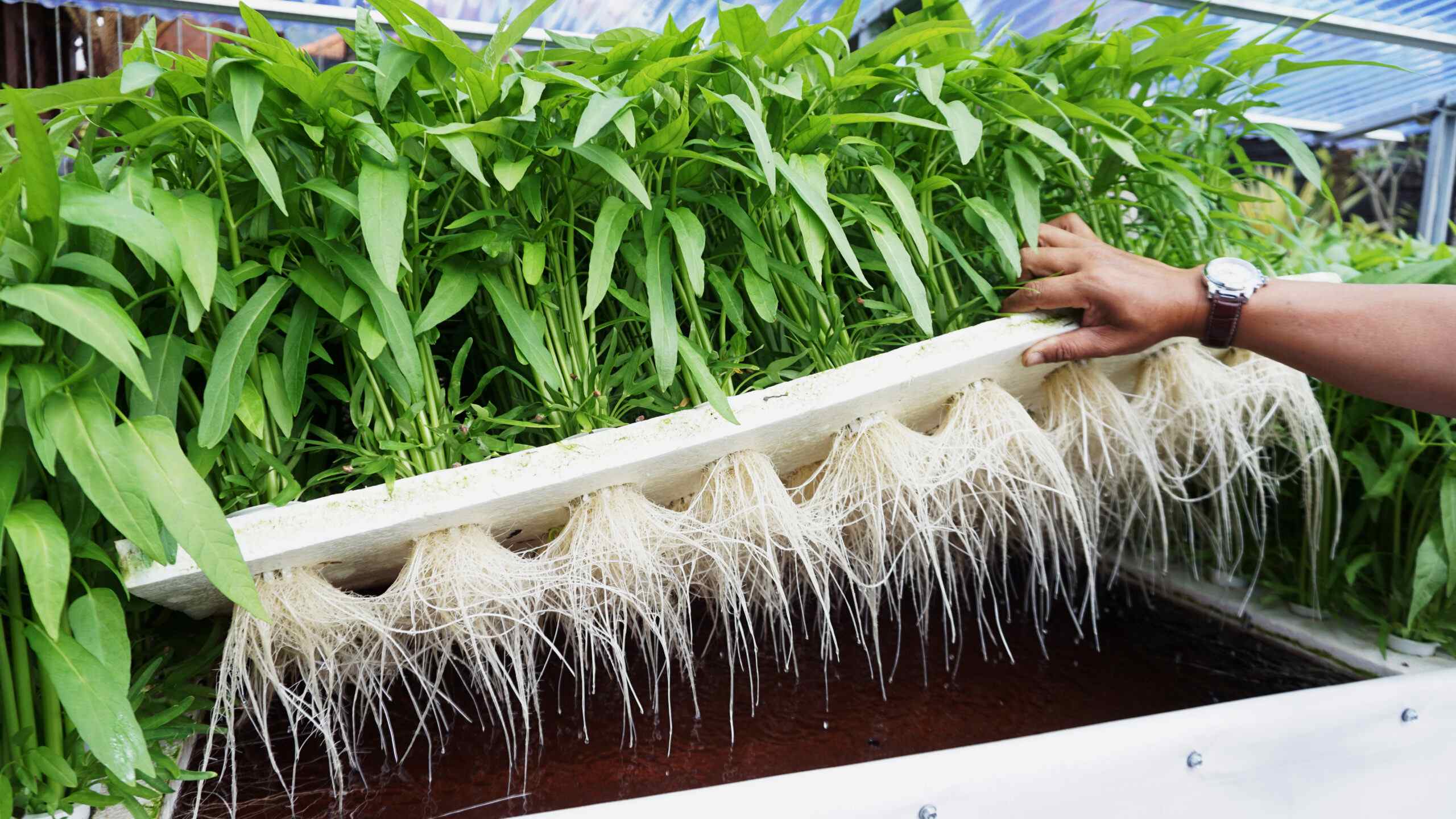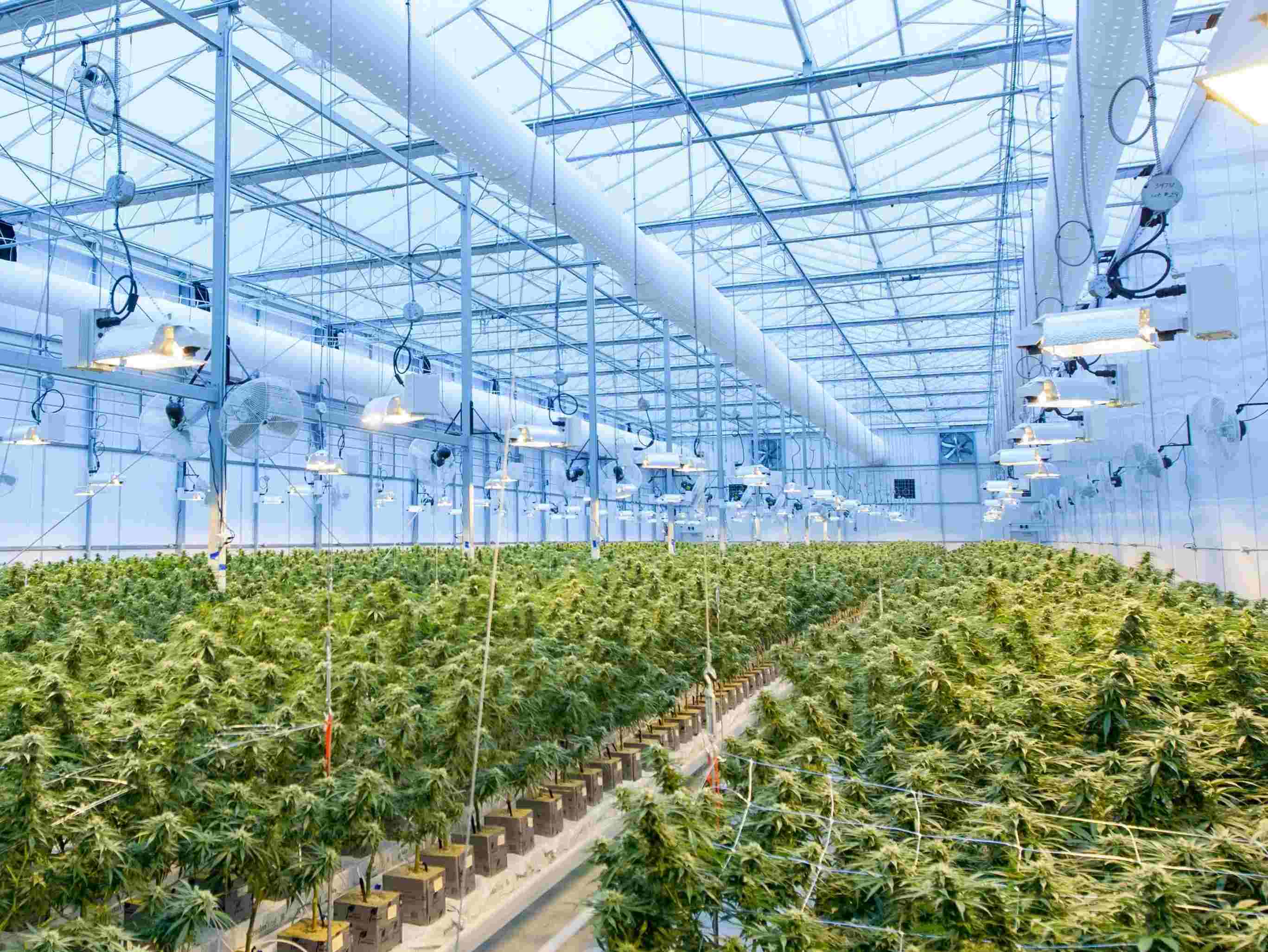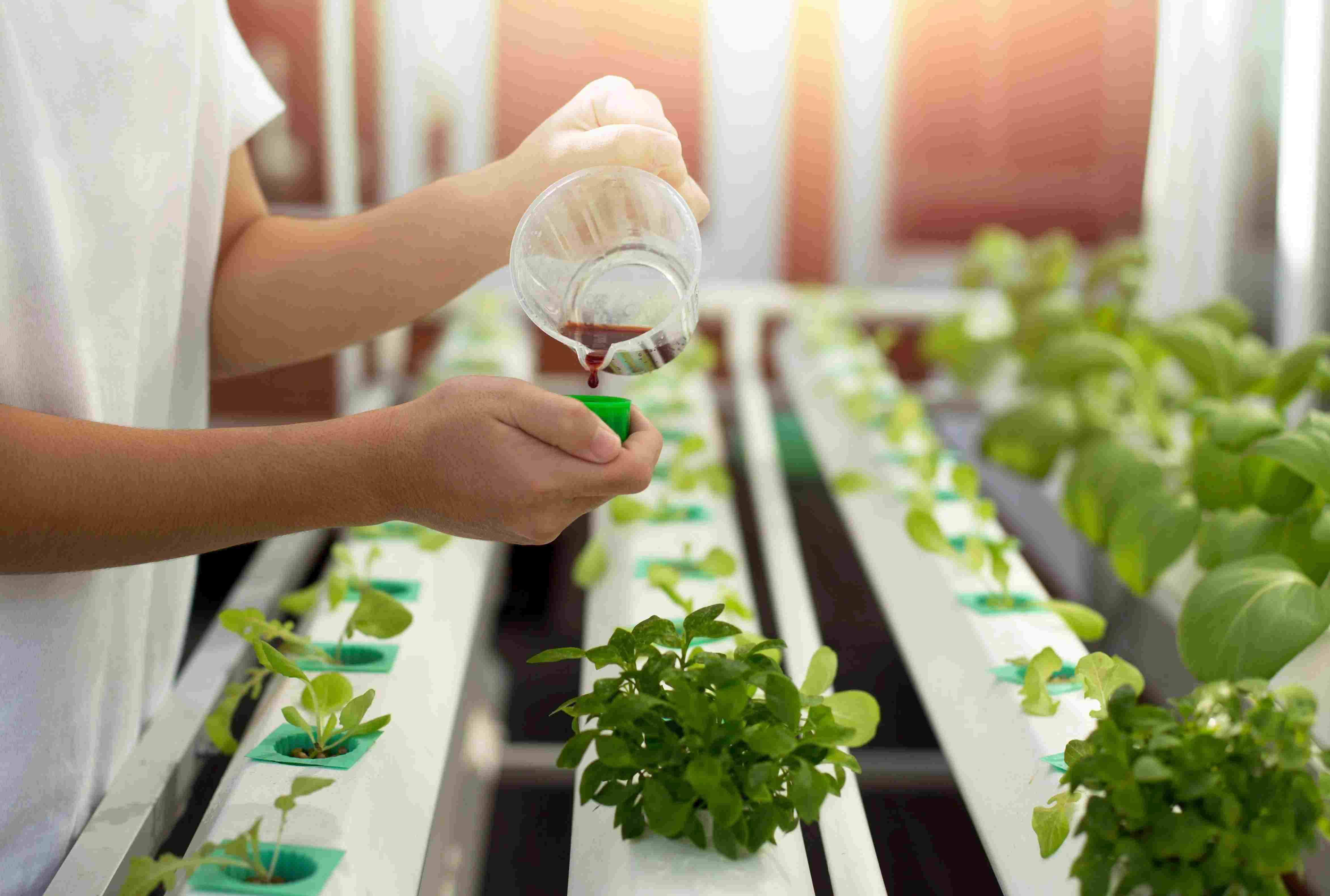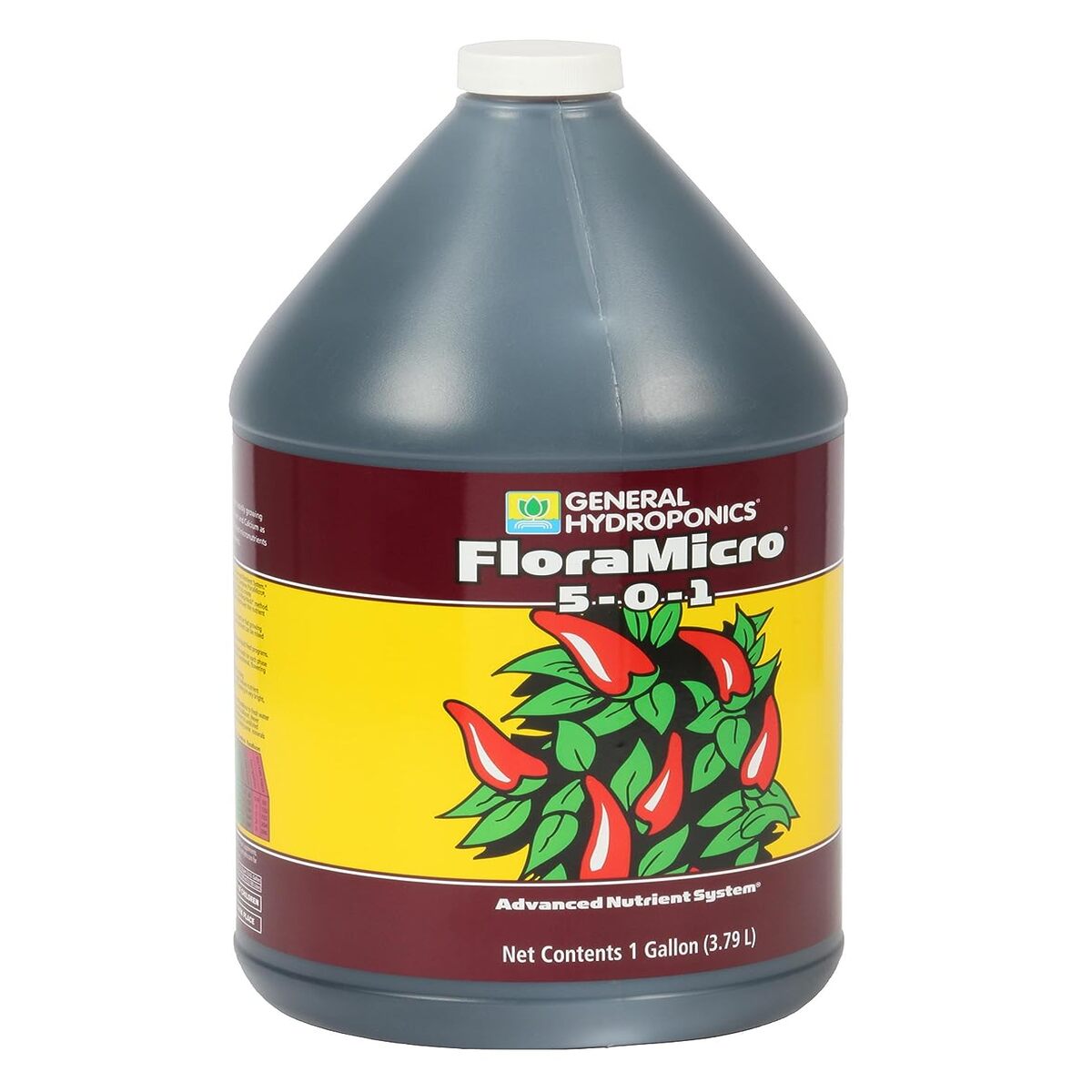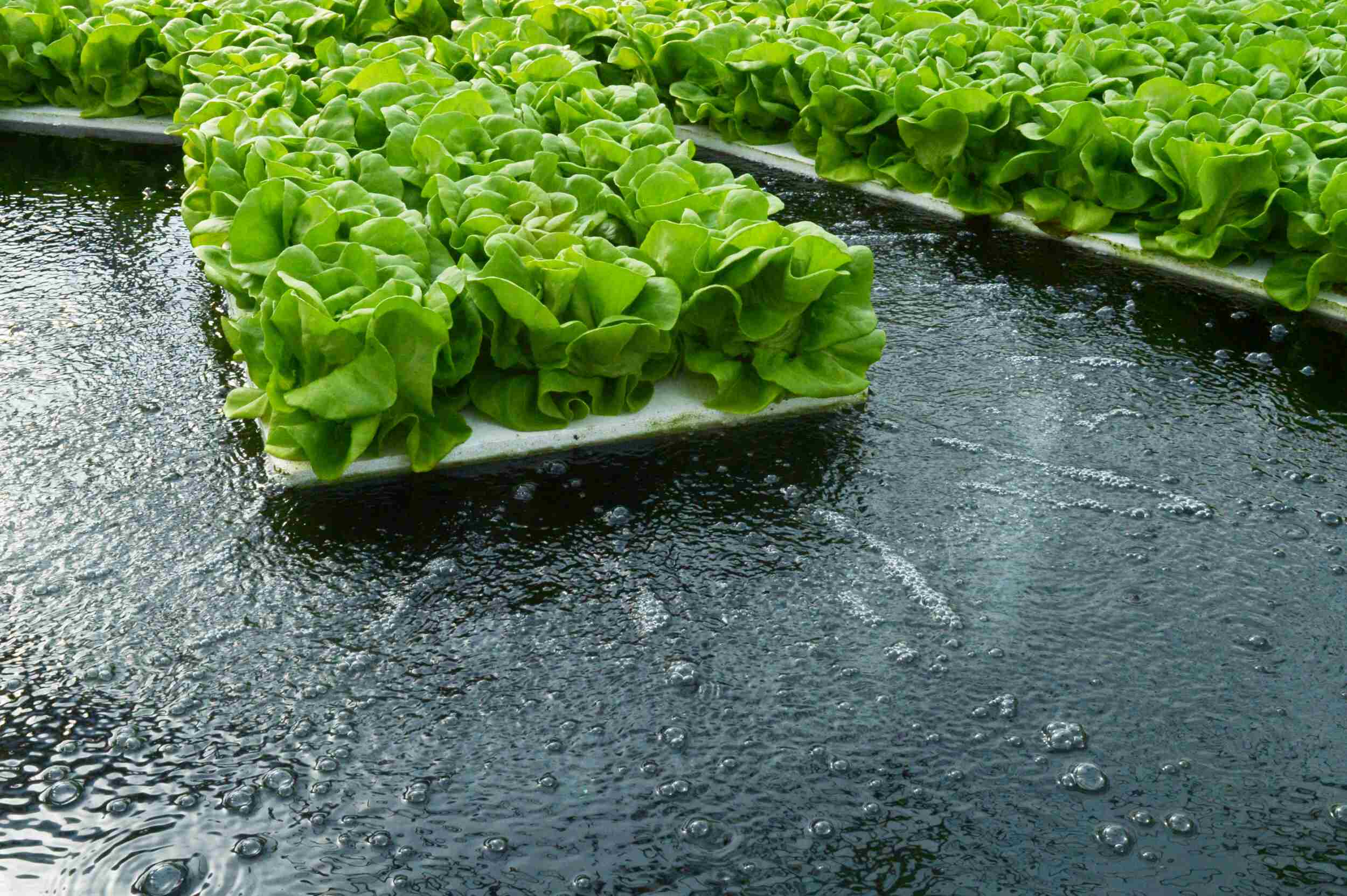Home>Gardening Tips and Tricks>Eco-Friendly Gardening>What Is DWC In Hydroponics


Eco-Friendly Gardening
What Is DWC In Hydroponics
Modified: February 10, 2024
Discover the benefits of DWC hydroponics, an eco-friendly gardening technique that maximizes plant growth and minimizes water usage. Start your sustainable garden today!
(Many of the links in this article redirect to a specific reviewed product. Your purchase of these products through affiliate links helps to generate commission for Chicagolandgardening.com, at no extra cost. Learn more)
Table of Contents
- Introduction
- Definition of DWC Hydroponics
- Advantages of DWC Hydroponics
- Disadvantages of DWC Hydroponics
- How DWC Hydroponics Works
- Key Components of a DWC Hydroponics System
- Nutrient Solution in DWC Hydroponics
- Plant Selection for DWC Hydroponics
- Maintenance and Care of DWC Hydroponics System
- Common Challenges in DWC Hydroponics
- Conclusion
Introduction
Welcome to the world of DWC hydroponics! If you’re passionate about gardening but are limited by space, time, or environmental factors, DWC hydroponics is an eco-friendly gardening method that allows you to grow plants without the need for soil. Whether you’re a seasoned gardener or a beginner looking to explore sustainable and efficient gardening practices, DWC hydroponics offers a wealth of benefits.
DWC, which stands for Deep Water Culture, is a type of hydroponic system that suspends the plant’s roots in a nutrient-rich solution. This method provides the plants with everything they need to thrive: oxygen, water, and essential nutrients. With DWC hydroponics, you have more control over the growing environment, allowing you to optimize conditions for faster growth, higher yields, and healthier plants.
Unlike traditional soil-based gardening, where plants rely on natural processes to obtain nutrients, DWC hydroponics provides a highly efficient and controlled system. By directly delivering nutrients to the roots, plants are able to absorb nutrients more effectively, resulting in accelerated growth rates and larger yields.
In this comprehensive guide, we will explore the ins and outs of DWC hydroponics. We’ll discuss the advantages and disadvantages of this gardening method, delve into the key components of a DWC system, provide tips on plant selection, and address common challenges. By the end of this article, you’ll have all the knowledge you need to set up and maintain your own DWC hydroponics system.
Definition of DWC Hydroponics
DWC hydroponics, also known as Deep Water Culture, is a type of hydroponic cultivation method where plants are grown without soil. In this system, the plant’s roots are suspended in a nutrient-rich solution, allowing them to directly absorb the necessary water and nutrients for growth.
Unlike traditional soil-based gardening, where plants obtain nutrients through root systems that extend into the ground, DWC hydroponics provides a more efficient and controlled environment. The plants’ roots are submerged in the nutrient solution, which is constantly oxygenated through the use of air stones or diffusers. This ensures that the roots receive ample oxygen for optimal growth.
The nutrient solution in DWC hydroponics serves as a substitute for soil, containing a balanced blend of essential nutrients such as nitrogen, phosphorus, potassium, and micronutrients. These nutrients are dissolved in water and absorbed directly by the plant’s roots, resulting in faster growth and higher yields compared to traditional gardening methods.
DWC hydroponics is a popular choice among gardeners for several reasons. Firstly, it allows for maximum nutrient uptake, as the plants have constant access to the nutrients they need without the restrictions of soil composition. Secondly, the controlled environment of DWC hydroponics reduces the risk of pests and diseases, resulting in healthier plants. Lastly, this method is highly water-efficient, as the nutrient solution can be recirculated, reducing water waste.
This innovative gardening method has gained popularity in both commercial and domestic settings, enabling individuals to grow a wide variety of plants, including herbs, vegetables, and even flowering plants. With DWC hydroponics, gardening becomes accessible to those with limited outdoor space or adverse growing conditions, making it an ideal solution for urban dwellers and environmentally conscious gardeners.
Advantages of DWC Hydroponics
DWC hydroponics offers a multitude of advantages over traditional soil-based gardening methods. Here are some of the key benefits:
- Higher Yields: DWC hydroponics promotes faster and healthier plant growth, leading to increased yields. By providing plants with a consistent and optimal nutrient solution, as well as ample oxygen, they can focus their energy on developing robust foliage and abundant fruits or flowers.
- Water Efficiency: DWC hydroponics is incredibly water-efficient compared to traditional gardening methods. The recirculation of the nutrient solution allows for minimal water wastage. Additionally, the water is directly absorbed by the plant’s roots, minimizing evaporation and reducing the overall water required for growth.
- Space-Saving: DWC hydroponics is an ideal solution for those with limited space. Since it doesn’t rely on soil, plants can be grown in compact containers or even vertically, making it possible to cultivate a diverse range of plants in small urban environments or indoor settings.
- Pest and Disease Control: The controlled environment of DWC hydroponics reduces the risk of pests and diseases. Without soil, common soil-borne pests and pathogens are less likely to affect plants. Additionally, the absence of native soil eliminates the need for harmful pesticides or chemical treatments.
- Consistent Nutrient Supply: In DWC hydroponics, plants receive a continuous supply of properly balanced nutrients. This eliminates the need to constantly monitor soil conditions or supplement with fertilizers. The controlled nutrient solution ensures that plants have access to all the essential elements they need for healthy growth.
- Year-Round Growing: With DWC hydroponics, you can create an optimal growing environment regardless of the season. By controlling factors such as light, temperature, and nutrient levels, you can extend the growing season or even grow plants year-round, regardless of the external climate conditions.
These advantages make DWC hydroponics an attractive gardening method for both commercial growers and home gardeners. Whether you’re aiming for a sustainable food source, a thriving herb garden, or simply a visually appealing display of flowers, DWC hydroponics provides a reliable and efficient solution.
Disadvantages of DWC Hydroponics
While DWC hydroponics offers numerous advantages, it is important to consider the potential drawbacks before diving into this gardening method. Here are some of the key disadvantages:
- Initial Setup Cost: Setting up a DWC hydroponics system can require a higher initial investment compared to traditional gardening methods. This includes the cost of purchasing equipment such as grow lights, air pumps, air stones or diffusers, and nutrient solutions.
- Technical Knowledge Requirement: DWC hydroponics may require a basic understanding of hydroponic principles, nutrient composition, pH balancing, and the proper use of equipment. It may take some time and research to familiarize yourself with the necessary techniques and maintenance procedures.
- Monitoring and Maintenance: DWC hydroponics systems require regular monitoring and maintenance to ensure proper nutrient levels, pH balance, and oxygenation. This includes checking and adjusting nutrient solution levels, monitoring water temperature, and regularly cleaning and maintaining equipment.
- Power Dependency: DWC hydroponics systems typically rely on electricity to power air pumps, grow lights, and other equipment. This can increase energy consumption and result in higher utility costs over time.
- Vulnerability to Power Outages: In the event of a power outage, DWC hydroponics systems may be susceptible to a lack of oxygenation and nutrient delivery. It is important to have backup systems in place, such as battery-operated air pumps, to keep plants healthy during power interruptions.
- Single Point of Failure: Since all plants in a DWC hydroponics system share the same nutrient reservoir, if a problem arises, such as nutrient imbalance or disease, it can affect all the plants in the system simultaneously.
- Limited Plant Selection: Some plants may not thrive in a DWC hydroponics system. Species with extensive root systems or water-sensitive plants may not be well-suited for this growing method.
Despite these disadvantages, many gardeners find that the benefits of DWC hydroponics outweigh the challenges. With proper knowledge, planning, and attention to detail, you can successfully overcome these potential drawbacks and enjoy the rewards of a flourishing DWC hydroponics garden.
How DWC Hydroponics Works
DWC hydroponics works by suspending the plant’s roots in a nutrient-rich solution and providing them with constant access to water, oxygen, and essential nutrients. This method allows plants to grow and thrive without the use of soil, maximizing nutrient absorption and promoting accelerated growth.
In a DWC hydroponics system, plants are typically placed in net pots or foam cubes, with their roots exposed to the nutrient solution. The nutrient solution is contained in a reservoir or a large container beneath the plants. An air pump is used to provide continuous aeration, ensuring that the roots receive sufficient oxygen for respiration.
The nutrient solution in a DWC system typically consists of water enriched with a carefully balanced blend of essential macronutrients, micronutrients, and additives. These nutrients are dissolved into the water, creating a soluble solution that can be easily absorbed by the plant’s roots.
The roots of the plants dangle into the nutrient solution, allowing them to absorb the required water and nutrients directly. This direct access eliminates the need for plants to search for nutrients in the soil, resulting in more efficient nutrient uptake and faster growth rates.
One of the key factors in the success of DWC hydroponics is maintaining the correct levels of water, oxygen, and nutrients. Both the water level and the nutrient concentration need to be regularly monitored and adjusted as necessary. pH levels should also be regularly checked and adjusted to ensure that they fall within the optimal range for plant absorption.
Lighting is another crucial component in DWC hydroponics. Plants need an appropriate light source to undergo photosynthesis, which is essential for their growth. LED or fluorescent grow lights are commonly used to provide plants with the necessary light spectrum, intensity, and duration for optimal growth.
Overall, DWC hydroponics provides a highly efficient and controlled environment for plants to thrive. By eliminating the limitations and variability of soil conditions, plants can focus their energy on growth and development, resulting in healthier plants and higher yields.
Key Components of a DWC Hydroponics System
Setting up a successful DWC hydroponics system requires a few key components to ensure optimal growth and plant health. Here are the essential elements of a DWC hydroponics system:
- Container or Reservoir: The container or reservoir holds the nutrient solution in which the plant’s roots will be suspended. It should be large enough to accommodate the size and number of plants you plan to grow.
- Net Pots or Foam Cubes: Net pots or foam cubes are used to hold the plants and allow their roots to dangle into the nutrient solution. These pots or cubes should be appropriately sized for the plants you are growing.
- Air Pump and Air Stones/Diffusers: An air pump is used to provide a continuous supply of oxygen to the nutrient solution. Air stones or diffusers are connected to the air pump and placed in the reservoir to release small bubbles, ensuring sufficient oxygenation of the nutrient solution.
- Nutrient Solution: The nutrient solution provides the essential macronutrients, micronutrients, and additives necessary for plant growth. It should be properly balanced and adjusted to meet the specific needs of the plants being grown.
- pH Test Kit and pH Adjusters: A pH test kit is essential for monitoring and adjusting the pH levels of the nutrient solution. The pH should be maintained within the optimal range to facilitate nutrient absorption by the plants.
- Grow Lights: In indoor DWC hydroponics systems, grow lights are necessary to provide the plants with the right amount and spectrum of light for photosynthesis. LED or fluorescent grow lights are commonly used for this purpose.
- Timer: A timer can be used to control the lighting schedule in the DWC hydroponics system. This ensures that plants receive an appropriate amount of light each day, simulating natural daylight cycles.
- Water Pump (optional): In larger DWC systems, a water pump may be used to circulate and recirculate the nutrient solution, ensuring even distribution and preventing stagnation.
These components work together to create an efficient and effective DWC hydroponics system. Proper installation, regular monitoring, and maintenance of these components will help ensure optimal plant growth and a successful harvest.
Nutrient Solution in DWC Hydroponics
The nutrient solution is a vital component of DWC hydroponics, providing plants with the necessary nutrients for healthy growth. It consists of a carefully balanced blend of macronutrients, micronutrients, and additives dissolved in water. The nutrient solution serves as a substitute for soil, delivering essential elements directly to the plant’s roots.
Macronutrients, such as nitrogen (N), phosphorus (P), and potassium (K), are essential for plant growth and development. These nutrients play key roles in processes like photosynthesis, energy production, and cell division. In DWC hydroponics, macronutrients are typically supplied in the form of water-soluble fertilizers or nutrient concentrates.
Micronutrients, including iron (Fe), manganese (Mn), zinc (Zn), and others, are required in smaller quantities but are equally important for plant health. These trace elements are involved in various enzymatic reactions and play vital roles in overall plant growth and development. Micronutrients can be included in the nutrient solution through pre-made hydroponic nutrient mixes or by adding specific micronutrient supplements.
In addition to macronutrients and micronutrients, certain additives can be included in the nutrient solution to enhance plant growth and health. These additives may include organic or synthetic growth enhancers, pH adjusters, root stimulators, and bloom boosters. Each additive serves a specific purpose and should be used in accordance with the plant’s growth stage and specific needs.
It is crucial to maintain the correct nutrient solution concentration and balance for optimal plant growth. Overdosing or underdosing of nutrients can negatively affect plant health and productivity. Regular monitoring of the nutrient solution’s electrical conductivity (EC) and pH levels is essential to ensure that the plants are receiving the right nutrient concentration and that the pH is within the optimal range for nutrient uptake.
Preparing the nutrient solution involves measuring and mixing the appropriate amounts of water and nutrient concentrates according to the manufacturer’s instructions or a predetermined nutrient recipe. Monitoring and adjusting the nutrient solution regularly will ensure that the plants receive the necessary elements for healthy growth throughout their lifecycle.
Remember to always use high-quality nutrient solutions, follow the recommended dosages, and adjust the nutrient levels as needed based on the plants’ growth and nutrient uptake. By providing the correct nutrient balance, you can maximize the growth potential of your DWC hydroponics plants and achieve impressive yields.
Plant Selection for DWC Hydroponics
When it comes to choosing plants for DWC hydroponics, there are a variety of factors to consider. While this gardening method can accommodate a wide range of plant species, some plants are better suited for DWC systems than others. Here are some key considerations for plant selection in DWC hydroponics:
- Growth Rate: Plants with rapid growth rates are well-suited for DWC hydroponics. Fast-growing vegetables, herbs, and leafy greens tend to thrive in this system, as they can quickly take up the available nutrients and produce abundant foliage.
- Root Structure: Plants with a fibrous or adventitious root structure are ideal for DWC hydroponics. These types of roots are more adaptable to being suspended in water, as they readily absorb the nutrient solution. Avoid plants with extensive taproot systems, as they may have difficulty thriving in a nutrient solution-based environment.
- Water Sensitivity: Some plants are more tolerant of being constantly immersed in water than others. Plants that naturally grow in or near bodies of water, such as watercress or water spinach, are excellent choices for DWC hydroponics. However, plants that are highly water-sensitive, such as succulents, may not fare well in this environment.
- Space Requirements: Consider the space available in your DWC hydroponics system when selecting plants. Compact varieties or plants that can be trained to grow vertically, such as cherry tomatoes or dwarf varieties of peppers, can maximize space utilization in limited-sized containers or vertical growing setups.
- Crop Yield: If your goal is to grow plants for harvest, consider the yield potential of the chosen plants. Look for varieties that are known for their high productivity and ability to produce abundant fruits, vegetables, or herbs.
- Temperature and Light Requirements: Different plants have varying temperature and light requirements. Ensure that the selected plants are compatible with the temperature and lighting conditions you can provide in your DWC hydroponics system. If growing indoors, consider using appropriate grow lights to meet the plants’ light needs.
Common plant choices for DWC hydroponics include lettuce, spinach, kale, basil, chives, mint, and a variety of leafy greens and herbs. However, the range of plants that can be grown in DWC hydroponics is not limited to these options. Don’t be afraid to experiment and try different crops to find out what works best for your specific setup and growing conditions.
It is important to do thorough research on the specific requirements of the plants you wish to grow and to follow recommended guidelines for their cultivation in DWC hydroponics. By selecting the right plants, you can enjoy a diverse and abundant harvest from your DWC hydroponics system.
Maintenance and Care of DWC Hydroponics System
Maintaining and caring for your DWC hydroponics system is essential for the long-term success of your plants. Regular maintenance ensures that your system is functioning optimally, providing the necessary water, nutrients, and oxygen for healthy plant growth. Here are some key maintenance and care tips to keep in mind:
- Monitor Nutrient Solution: Regularly check the nutrient solution’s pH levels and electrical conductivity (EC) to ensure they are within the desired range. Adjust the pH using pH adjusters as needed, and be prepared to top up or change the nutrient solution based on the plants’ nutrient requirements and usage.
- Check Water Levels: Monitor the water level in your DWC system and ensure that the roots are always submerged in the nutrient solution. Be prepared to top up the water as needed to maintain the desired level. However, be cautious not to overfill the system, as this can lead to oxygen deprivation for the roots.
- Inspect Roots: Regularly inspect the plant roots submerged in the nutrient solution. Look for any signs of rot, disease, or excess root growth. If necessary, prune unhealthy or excessive roots to maintain a healthy root system.
- Clean and Sanitize: Clean and sanitize your DWC system regularly to prevent the buildup of algae, bacteria, or other contaminants. Empty and clean the reservoir, net pots, and any other components of the system. This helps maintain a sterile environment for the plants and prevents the risk of infection or disease.
- Monitor Lighting and Temperature: Check that your grow lights are functioning properly and providing the appropriate spectrum and intensity for plant growth. Monitor and control the temperature in your grow area to prevent extreme heat stress or cold damage to the plants.
- Prune and Train Plants: Regularly prune and train your plants to promote healthy growth and maximize space utilization. Remove any dead or yellowing leaves, as well as any excessive foliage that may overcrowd the growing area. This allows for better airflow and prevents the risk of pests and diseases.
- Prevent Contamination: Take precautions to prevent cross-contamination between plants. Avoid transferring pests, diseases, or pathogens from one plant to another by practicing good hygiene, using sterilized tools, and washing your hands thoroughly before handling different plants.
- Regular Maintenance: Take the time to perform routine maintenance tasks such as checking and cleaning air pumps, inspecting and replacing air stones or diffusers, and ensuring that all system components are functioning properly. This helps prevent system failures and ensures that your plants have a healthy growing environment.
By following these maintenance and care guidelines, you can ensure the ongoing health and productivity of your DWC hydroponics system. Regular monitoring and attention to detail will help you identify and address any issues promptly, allowing your plants to thrive and flourish.
Common Challenges in DWC Hydroponics
While DWC hydroponics offers numerous benefits, it is not without its challenges. As with any gardening method, there are common issues that hydroponic gardeners may encounter. Here are some of the common challenges you may face in DWC hydroponics:
- Root Diseases: The moisture-rich environment of DWC hydroponics can make plants more susceptible to root diseases, such as root rot. To prevent this, ensure proper water and oxygen circulation, maintain the right pH and nutrient balance, and regularly monitor and sanitize the system to prevent the growth of harmful pathogens.
- Nutrient Imbalances: Maintaining the correct nutrient balance can be a challenge in DWC hydroponics. Overfeeding or underfeeding plants can lead to nutrient deficiencies or toxicities. Regular monitoring of nutrient levels and pH, adjusting nutrient solutions as needed, and following recommended nutrient dosages can help prevent imbalances.
- Temperature Regulation: DWC hydroponics systems can be sensitive to temperature fluctuations. High temperatures can lead to reduced oxygen levels, while low temperatures can slow down plant growth. It is important to monitor and regulate the temperature in the growing area to create an optimal environment for the plants.
- Oxygenation Issues: Providing sufficient oxygen to the nutrient solution is crucial for healthy root growth. Oxygenation problems, such as inadequate air supply, clogged air stones, or poor water circulation, can lead to root suffocation and plant health issues. Regularly check and clean air stones or diffusers, ensure proper air pump functionality, and maintain a good water circulation system.
- Pest Infestations: Although DWC hydroponics systems are less prone to pest infestations compared to traditional soil-based gardening, pests such as aphids, fungus gnats, or spider mites can still find their way into the growing environment. Regular monitoring, implementing integrated pest management techniques, and maintaining proper cleanliness and hygiene can help prevent and address pest issues.
- System Failures: Technical issues, such as power outages or equipment malfunctions, can disrupt the functioning of your DWC hydroponics system. Having backup systems, such as battery-operated air pumps or alternative power sources, can minimize the impact of system failures and provide temporary support until the issue is resolved.
While these challenges may seem daunting, with proper knowledge, preparation, and regular maintenance, they can be overcome. By being proactive and attentive to the needs of your DWC hydroponics system, you can minimize the likelihood of encountering these challenges and ensure the success of your hydroponic garden.
Conclusion
DWC hydroponics is a versatile and efficient gardening method that allows you to grow plants without soil, providing numerous benefits for both experienced gardeners and beginners alike. By suspending plant roots in a nutrient-rich solution, DWC hydroponics offers a controlled and optimized environment that promotes rapid growth, higher yields, and healthier plants.
Through the careful selection of plants, regular maintenance, and attention to detail, you can overcome common challenges associated with DWC hydroponics, such as root diseases, nutrient imbalances, temperature regulation, oxygenation issues, pest infestations, and system failures. By addressing these challenges, you can ensure the long-term success of your hydroponic garden.
With the ability to grow a wide variety of plants, DWC hydroponics opens up new possibilities for urban gardeners, those with limited outdoor space, or those seeking a more sustainable and efficient gardening method. Whether you want to cultivate vibrant herbs, fresh leafy greens, or bountiful harvests of vegetables, DWC hydroponics offers the potential to achieve impressive results.
Embracing DWC hydroponics also aligns with eco-friendly practices by reducing water consumption, eliminating the use of chemical pesticides, and maximizing nutrient absorption for minimal waste. This sustainable gardening method empowers individuals to cultivate their own fresh produce, enhance their culinary endeavors, and enjoy the rewards of a thriving garden.
As you embark on your DWC hydroponics journey, remember to educate yourself on the specific needs of the plants you choose, maintain the proper balance of nutrients, monitor environmental conditions, and invest time in regular maintenance. By doing so, you can create an ideal growing environment and witness the incredible benefits that DWC hydroponics can bring to your gardening experience.
